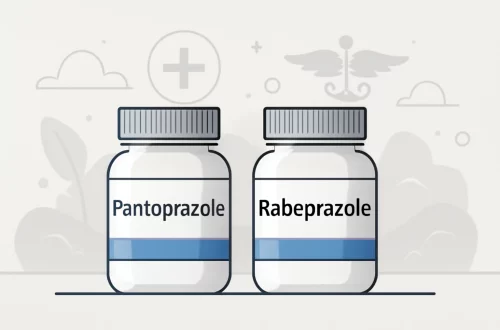
Understanding Serratus Posterior Pain: Causes and Relief Strategies
Understanding Serratus Posterior Pain: Causes and Relief Strategies
Serratus posterior pain is a condition that many individuals may face, often without fully understanding its origins or implications. This type of discomfort is typically linked to the serratus posterior muscles, which play a crucial role in the movement of the upper body and in respiration. These muscles, located on the back, can become strained or irritated due to various activities, poor posture, or underlying health issues.
The complexity of the human body means that pain can manifest in numerous ways, and the serratus posterior is no exception. Understanding the mechanics of these muscles and the factors that contribute to pain can empower individuals to take proactive steps toward relief. Many people may dismiss their discomfort, attributing it to fatigue or minor strain, but recognizing the symptoms early can lead to more effective management strategies.
In today’s fast-paced world, where many individuals spend long hours sitting at desks or engaging in repetitive motions, awareness of muscle health is paramount. Addressing issues related to serratus posterior pain not only enhances physical comfort but also contributes to overall well-being. With that in mind, let’s delve into the key aspects of serratus posterior pain, exploring its causes, symptoms, and effective relief strategies.
Common Causes of Serratus Posterior Pain
Serratus posterior pain can arise from a multitude of factors, making it essential to identify the root cause for effective treatment. One of the primary culprits is muscle strain, which can occur from overexertion during physical activities or improper lifting techniques. Individuals who engage in sports or heavy lifting without adequate warm-up or conditioning may find themselves more susceptible to strains in the serratus posterior muscles.
Another significant factor contributing to this type of pain is poor posture. In our daily lives, many of us tend to slouch or sit in non-ergonomic positions, particularly during long hours at a desk. This can lead to muscle imbalances and tension in the upper back, exacerbating discomfort in the serratus posterior region. Over time, habitual poor posture can result in chronic pain and limited mobility, making it crucial to address these habits early on.
Additionally, underlying medical conditions such as fibromyalgia or spinal disorders can also manifest as pain in the serratus posterior area. These conditions may create generalized muscle tension or inflammation, leading to discomfort. Recognizing that serratus posterior pain can sometimes be symptomatic of a more significant issue is vital for effective treatment.
Lastly, stress and emotional factors can contribute to muscle tension throughout the body, including the serratus posterior. Stress often leads to increased muscle tightness and can exacerbate existing pain conditions. Therefore, managing stress through relaxation techniques and lifestyle adjustments is an essential aspect of addressing serratus posterior pain.
Identifying Symptoms and Diagnosis
Recognizing the symptoms associated with serratus posterior pain is crucial for timely intervention. The most common symptom is a dull or sharp pain located in the upper back, particularly around the shoulder blades. This pain may worsen with specific movements, such as reaching overhead or twisting the torso. Individuals may also experience tenderness when palpating the area, indicating muscle strain or tension.
In addition to localized pain, some individuals may report radiating discomfort or referred pain that travels to other areas, such as the shoulders or arms. This can sometimes lead to confusion, as people may misinterpret the source of their pain. It is essential to pay attention to these symptoms and consider how they relate to physical activities or movements.
To diagnose serratus posterior pain, healthcare providers often conduct a thorough physical examination, including assessing range of motion and strength in the affected area. They may also ask about medical history and any previous injuries that could contribute to the current discomfort. In some cases, imaging tests such as X-rays or MRIs may be ordered to rule out other conditions, such as herniated discs or structural abnormalities.
It’s important to note that while self-diagnosis is common, it is always advisable to consult with a healthcare professional to determine the exact cause of pain. A comprehensive approach to diagnosis ensures that appropriate treatment strategies are employed, tailored to the individual’s specific needs and circumstances.
Effective Relief Strategies for Serratus Posterior Pain
Relieving serratus posterior pain often requires a multifaceted approach that combines rest, physical therapy, and lifestyle modifications. One of the first steps in managing pain is to allow the affected muscles to rest. This may involve temporarily avoiding activities that exacerbate the discomfort, such as heavy lifting or repetitive motions.
Physical therapy is a highly effective avenue for rehabilitation. A qualified therapist can design a personalized program that focuses on strengthening the serratus posterior muscles while improving flexibility and posture. Stretching exercises are particularly beneficial, as they can alleviate tension and promote blood flow to the area. Furthermore, strengthening exercises targeting the surrounding muscle groups can help create balance and prevent future injuries.
Incorporating ergonomic adjustments into daily routines is equally important. This may involve using chairs that support proper posture, setting up workstations to promote better alignment, and being mindful of body mechanics while performing tasks. Regular breaks during prolonged sitting or repetitive activities can also mitigate the strain on the serratus posterior muscles.
Additionally, alternative therapies such as massage, acupuncture, and chiropractic adjustments can provide relief for muscle tension and pain. These modalities can enhance blood circulation and promote relaxation, aiding in the recovery process.
Lastly, adopting stress management techniques, such as mindfulness, yoga, or deep-breathing exercises, can contribute to overall muscle relaxation and pain relief. By addressing the physical and emotional factors that contribute to serratus posterior pain, individuals can create a comprehensive plan for recovery and long-term health.
When to Seek Professional Help
While many cases of serratus posterior pain can be managed at home with self-care strategies, it is essential to recognize when professional intervention is necessary. If pain persists for an extended period or worsens despite self-treatment efforts, it is crucial to consult with a healthcare provider. This is especially important if the pain is accompanied by other concerning symptoms, such as numbness, tingling, or weakness in the arms or hands.
Additionally, individuals with a history of spinal conditions or significant trauma should seek medical advice promptly. A professional evaluation can help rule out serious underlying issues and ensure that appropriate treatment is initiated.
In conclusion, understanding serratus posterior pain and its implications is vital for effective management. By recognizing the causes, symptoms, and relief strategies, individuals can take proactive steps toward improving their muscle health and overall well-being.
**Disclaimer: This article is for informational purposes only and should not be considered medical advice. Always consult with a healthcare professional for any health-related issues.**




